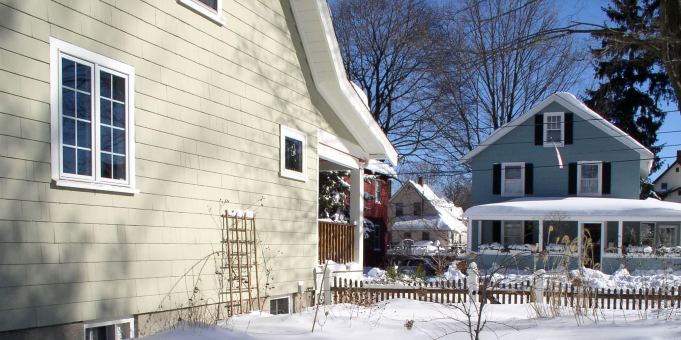You can use weatherstripping in your home to seal air leaks around movable building components, such as doors or operable windows. For stationary components, caulk is the appropriate material for filling cracks and gaps. Before applying weatherstripping in an existing home, you will need to detect the air leaks and assess your ventilation needs to ensure adequate indoor air quality.
Green Newton’s partner, Able Home Performance, offers Mass Save no-cost home energy assessments that includes free safety evaluation of your heating and cooling systems; free check-up of insulation and air sealing needs; free LED bulbs to replace inefficient bulbs; 75% Mass Save discount on approved insulation upgrades (with no limit on discount); and up to 12 hours of air-sealing work at no cost. You can find out more at www.NewtonSaves.com or 781-436-2639.
Choosing Weatherstripping
Choose a type of weatherstripping that will withstand the friction, weather, temperature changes, and wear and tear associated with its location. For example, when applied to a door bottom or threshold, weatherstripping could drag on carpet or erode as a result of foot traffic. Weatherstripping in a window sash must accommodate the sliding of panes — up and down, sideways, or out. The weatherstripping you choose should seal well when the door or window is closed but allow it to open freely.
Choose a product for each specific location. Felt and open-cell foams tend to be inexpensive, susceptible to weather, visible, and inefficient at blocking airflow. However, the ease of applying these materials may make them valuable in low-traffic areas. Vinyl, which is slightly more expensive, holds up well and resists moisture. Metals (bronze, copper, stainless steel, and aluminum) last for years and are affordable. Metal weatherstripping can also provide a nice touch to older homes where vinyl might seem out of place.
You can use more than one type of weatherstripping to seal an irregularly shaped space. Also take durability into account when comparing costs. See a table on the link below for information about the common types of weatherstripping.
www.energy.gov/energysaver/weatherize/air-sealing-your-home/weatherstripping


Recently on Twitter